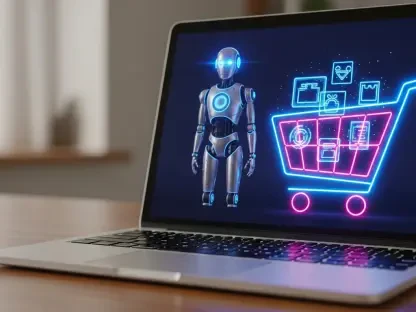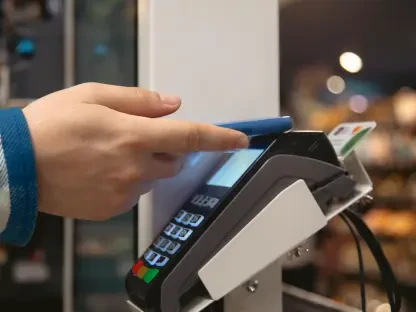The e-commerce landscape has undergone a rapid transformation, with delivery speed often being hailed as a cornerstone of customer satisfaction. Yet, a new debate has shifted the spotlight, questioning whether the obsession with speed actually overshadows more pressing factors, such as reliability and clear communication. Recent insights gathered from industry events suggest that the allure of fast shipping might not be as critical as once believed. Experts, such as Eric Haynor from Purple Innovation and Remington Tonar from Cart.com, shed light on an emerging consensus: reliability and transparency are the key ingredients that genuinely drive consumer loyalty and trust. This insight raises the question of whether it’s time for the e-commerce sector to recalibrate its focus, placing a higher value on meeting promised delivery times and maintaining open lines of communication over perpetually chasing faster delivery options.
The Importance of Reliability in E-Commerce
Retailers are increasingly focusing on delivering a reliable service as opposed to merely offering the fastest shipping options. An example comes from Purple Innovation, a company that emphasizes dependable delivery schedules. According to their strategy, consistency in delivery aligns with customer expectations, creating a smoother experience as customers can coordinate their own schedules with anticipated delivery dates. This approach highlights a crucial factor often overlooked in the race for speed: the alignment of delivery timelines with consumer needs. Such synchronization is fundamental in promoting trust, especially for items like furniture or electronics, where customers prepare to receive goods at particular times. Reliability transcends mere punctuality, however. It involves transparent communication throughout the delivery process, keeping customers informed at every stage. This transparency, which is becoming a standard practice in food delivery, is gradually gaining traction in other retail sectors, emphasizing the importance of setting realistic delivery expectations and exceeding customer promises.
A shift towards reliability doesn’t suggest that speed is obsolete but that its role should be reprioritized. Speed is essential in certain segments, especially where products have a limited shelf life or are consumer staples. However, for items where immediate necessity isn’t a factor, offering continuously rapid delivery might not be as impactful on customer satisfaction. The adaptability in delivery options is becoming a significant differentiator among e-commerce platforms. Businesses that understand and cater to specific customer needs, adjusting their delivery speed accordingly, often see enhanced loyalty. Consumers, once they trust a brand’s ability to meet delivery promises, show a willingness to pay for the assurance of reliability over speed. This substantial shift indicates that the industry’s ultimate goal should be a balance between speed and reliability, with an emphasis on ensuring transparency and dependable service as essential components of customer relations.
Leveraging Technology for Enhanced Delivery
The digital era has significantly influenced consumer expectations, particularly in the realm of tracking the delivery process. Consumers now expect real-time updates and easy access to order tracking, which companies are increasingly providing by investing in technological solutions. The move towards integrated technology platforms not only supports operational efficiency but also elevates the customer experience by providing transparency throughout the delivery journey. This seamless visibility into product movement reassures customers, building confidence in the brand’s logistical capabilities. Retailers are utilizing advanced software to provide customers with updates, starting from the warehouse stage right up to the point of delivery. This practice not only strengthens operational reliability but sets the foundation for a long-term relationship with consumers.
Moreover, the integration of online and offline operations is enhancing delivery reliability and satisfaction. By adopting a hybrid approach, retailers can be more agile in responding to consumer demands, thus fostering higher levels of satisfaction. This integration involves weaving together brick-and-mortar logistics with digital interfaces, creating a cohesive experience that caters to market demands swiftly and effectively. Such synchronization is more than just a logistical improvement; it personalizes the consumer’s purchase journey by offering flexibility and responsiveness. By focusing on customer-centric strategies, businesses can fulfill expectations not only through product quality but also by enhancing service reliability, which is increasingly becoming vital in gaining a competitive edge.
The Future of Customer Satisfaction in E-Commerce
Retailers are increasingly prioritizing dependable service over simply offering the fastest shipping options. Purple Innovation exemplifies this trend by emphasizing consistent delivery schedules that align with customer expectations, allowing consumers to plan their own schedules around anticipated delivery dates. This strategy underscores a critical factor often overshadowed by the pursuit of speed: the synchronization of delivery timelines with consumer needs. Such alignment fosters trust, particularly for items like furniture or electronics, where consumers must prepare to receive goods at specific times. Reliability goes beyond mere punctuality; it involves clear communication throughout the delivery process, keeping customers informed at every stage. This transparency, commonplace in food delivery, is gaining popularity in other retail sectors, highlighting the importance of setting realistic delivery expectations and exceeding customer promises. The shift towards reliability doesn’t imply speed is obsolete but should be reprioritized. While essential for perishables or staples, continuous rapid delivery might not greatly boost satisfaction for non-urgent items.









